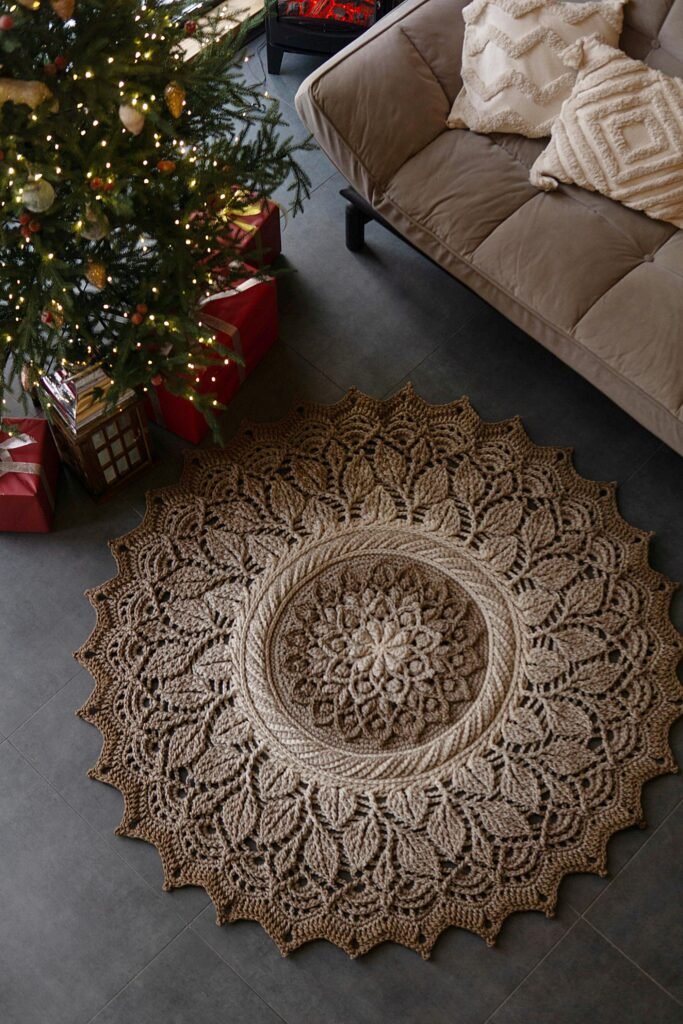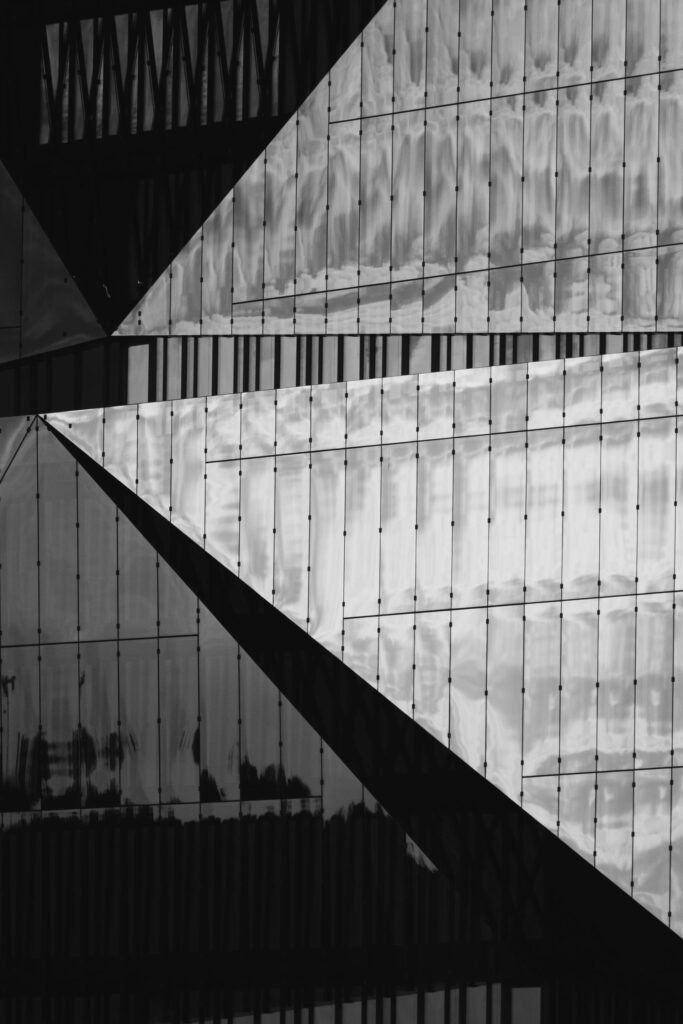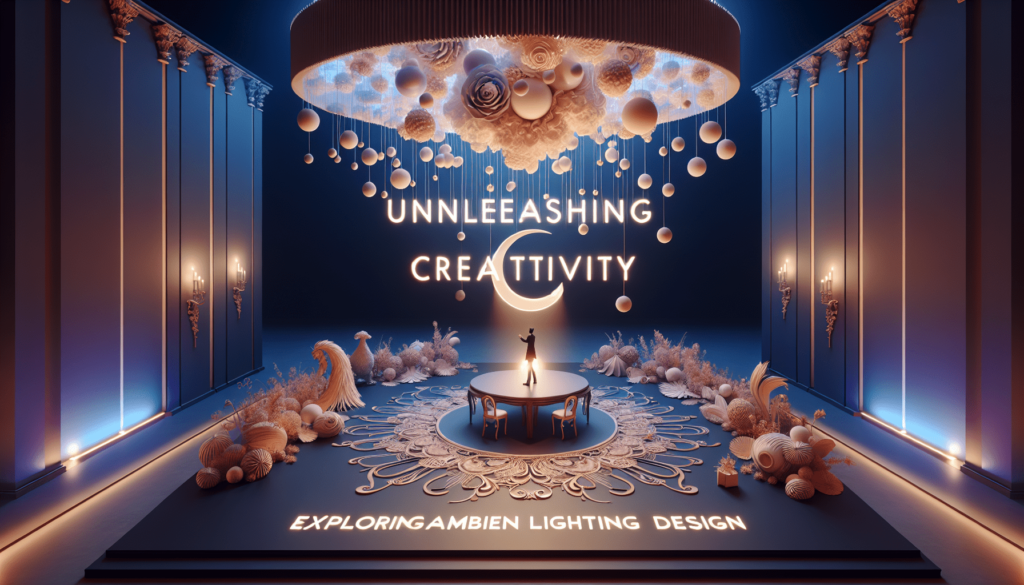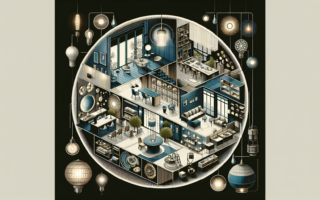Unleashing Creativity: Exploring Ambient Lighting Design takes you on an illuminating journey into the fascinating world of ambient lighting design. This captivating article delves into the various aspects of this art form, offering insights into how ambient lighting can transform spaces and enhance ambiance. From creating soothing atmospheres to igniting a sense of artistic flair, you’ll discover the limitless possibilities that ambient lighting design presents. Get ready to be inspired and discover how lighting can truly bring a space to life.
Introduction to Ambient Lighting Design
What is ambient lighting?
Ambient lighting is a fundamental component of interior design that refers to the general illumination of a space. It is the overall level of light that provides a comfortable and visually appealing environment. Unlike task lighting or accent lighting, which serve specific purposes, ambient lighting serves to create a functional and atmospheric space.
The importance of ambient lighting in design
Ambient lighting plays a crucial role in setting the overall mood and atmosphere of a space. It provides a visually comfortable environment for everyday activities and enhances the overall aesthetics of the room. By properly incorporating ambient lighting, you can create a welcoming and inviting atmosphere that complements the overall design scheme.
Benefits of incorporating ambient lighting in interior design
Incorporating ambient lighting into interior design offers several benefits. Firstly, it provides a sense of balance and harmony by eliminating harsh shadows and creating an even distribution of light. Secondly, ambient lighting enhances the perception of space, making the room appear larger and more open. Additionally, ambient lighting can influence emotions and well-being, creating a calming and relaxing atmosphere or promoting productivity and focus, depending on the chosen lighting techniques. Overall, it is a vital aspect of design that has the power to transform spaces.
Types of Ambient Lighting
Natural lighting
Natural lighting refers to the use of sunlight as the primary source of illumination in a space. It can be achieved through windows, skylights, or other architectural elements that allow natural light to enter the room. Natural lighting offers numerous benefits, including its ability to enhance moods, reduce energy consumption, and provide a connection to the outdoors.
General lighting
General lighting, also known as overhead lighting, provides the primary source of illumination in a space. It ensures overall visibility and is typically achieved through fixtures such as chandeliers, flush mounts, or recessed lights. General lighting should be evenly distributed to eliminate shadows and create a bright and welcoming environment.
Task lighting
Task lighting is focused lighting that is used to illuminate specific areas or objects for performing tasks, such as reading, cooking, or working. It is typically achieved through table lamps, desk lamps, or under-cabinet lighting. Task lighting should be adjustable to provide the necessary light intensity and direction for the specific task at hand.
Accent lighting
Accent lighting is used to highlight specific areas or objects in a space, such as artwork, architectural features, or decorative elements. It adds visual interest and drama to the room. Accent lighting can be achieved through track lighting, wall-mounted fixtures, or spotlights, allowing you to create focal points and draw attention to specific aspects of the design.
Decorative lighting
Decorative lighting serves as both a functional and aesthetic element in interior design. It includes fixtures such as pendant lights, chandeliers, or wall sconces that contribute to the overall style and ambiance of the room. Decorative lighting provides a unique and visually striking focal point, adding personality and character to the space.

Factors to Consider in Ambient Lighting Design
Room size and layout
The size and layout of the room play a significant role in determining the type and placement of ambient lighting. In smaller spaces, it is essential to ensure that the lighting is evenly distributed to avoid a cramped or disproportionate appearance. In larger rooms, multiple light sources may be required to provide sufficient illumination throughout the space.
Function and purpose of the space
The function and purpose of the room should be carefully considered when designing ambient lighting. For example, a bedroom requires a soft and relaxing ambiance, while a kitchen or workspace may benefit from brighter and task-oriented lighting. Understanding the specific activities that will take place in the area will help determine the appropriate lighting choices.
Color temperature
Color temperature refers to the warmth or coolness of light and is measured in Kelvin (K). Warmer color temperatures, around 2700K to 3000K, create a cozy and intimate atmosphere, while cooler color temperatures, around 5000K to 6000K, produce a crisp and bright light. Choosing the right color temperature is crucial to achieving the desired mood and ambiance in a room.
Brightness and intensity
The brightness and intensity of light also contribute to the overall atmosphere of a space. Brighter lighting is generally preferred in areas where tasks or activities require better visibility, such as kitchens or offices. On the other hand, softer and dimmer lighting can create a more comfortable and soothing environment in spaces dedicated to relaxation, such as bedrooms or living rooms.
Lighting controls
Implementing lighting controls, such as dimmer switches or smart lighting systems, allows for flexibility and customization in ambient lighting. These controls enable you to adjust the brightness and intensity of the lights, making it easy to create different moods and adapt the lighting to different situations. Additionally, lighting controls can help reduce energy consumption and extend the lifespan of light bulbs.
Emotional and Psychological Impact of Ambient Lighting
Creating a calming and relaxing atmosphere
Properly designed ambient lighting has the power to create a calming and relaxing atmosphere in a space. Soft, warm lighting can evoke a sense of comfort and tranquility, making it ideal for bedrooms, living rooms, and spa-like environments. By reducing the harshness of light and creating a gentle and inviting ambiance, you can promote relaxation and enhance the overall well-being of individuals in the room.
Enhancing productivity and focus
In areas where productivity and focus are essential, such as home offices or study spaces, ambient lighting can be tailored to create a bright and stimulating environment. Cooler color temperatures and higher light intensities can promote alertness and concentration, helping individuals stay focused and productive. Additionally, incorporating task lighting in these areas can provide targeted illumination for specific activities.
Boosting mood and well-being
The psychological impact of ambient lighting extends beyond creating a specific atmosphere. Light has a direct influence on our mood and well-being. Exposure to natural light or lighting that mimics natural light can enhance the production of serotonin, a hormone that improves mood and promotes a positive outlook. By incorporating ambient lighting designs that replicate natural light, you can create a space that positively impacts individuals’ emotional state and overall well-being.

Exploring Different Light Sources for Ambient Lighting
Incandescent bulbs
Incandescent bulbs have been a popular choice for ambient lighting for many years. They offer warm and soft light, creating a cozy and comfortable environment. However, incandescent bulbs are not energy-efficient and have a limited lifespan compared to newer lighting technologies.
Halogen bulbs
Halogen bulbs produce bright and white light, making them suitable for areas that require high visibility, such as kitchens or workspaces. They are more energy-efficient than incandescent bulbs and have a longer lifespan. However, they do generate more heat and require careful handling to avoid burns or fire hazards.
Compact fluorescent bulbs
Compact fluorescent bulbs, also known as CFLs, are energy-efficient alternatives to traditional incandescent bulbs. They use less electricity and have a longer lifespan. CFLs are available in a variety of color temperatures, ranging from warm to cool light. However, some individuals may find the quality of light produced by CFLs to be less appealing due to their characteristic flickering.
LED bulbs
LED bulbs have become increasingly popular in recent years due to their energy efficiency, long lifespan, and versatility. They are available in a wide range of color temperatures and can produce both warm and cool light. LED bulbs are also dimmable, making them suitable for creating various moods and ambiance. Although LED bulbs may have a higher upfront cost, their long-term energy savings and durability make them a cost-effective and sustainable choice for ambient lighting.
Understanding Color Temperature in Ambient Lighting
Warm vs. cool colors
Color temperature refers to the perceived warmth or coolness of light. Warm colors, such as red, yellow, or orange, are associated with lower color temperatures (around 2700K to 3000K). They create a cozy and intimate ambiance, often found in residential and hospitality settings. Cool colors, such as blue or white, are associated with higher color temperatures (around 5000K to 6000K) and deliver a crisp and bright light. They are commonly used in workspaces, retail environments, or areas that require a more energetic atmosphere.
Choosing the right color temperature for different spaces
When selecting the color temperature for ambient lighting, it is important to consider the function and desired ambiance of the space. For areas dedicated to relaxation, warmth, and comfort, such as bedrooms or living rooms, warmer color temperatures are more suitable. In areas where tasks or work are performed, cooler color temperatures are preferred to enhance visibility and concentration.
Effect of color temperature on emotions and perception
Color temperature has a significant impact on emotions and perception. Warm light creates a cozy and soothing environment, eliciting feelings of relaxation and comfort. It can also enhance social interactions and evoke a sense of intimacy. On the other hand, cooler light can promote alertness and focus, making it beneficial in environments that require productivity or concentration. Understanding the psychological effects of different color temperatures can help create the desired ambiance and influence the overall mood of a space.

Utilizing Ambient Lighting Techniques in Interior Design
Layering lighting
Layering lighting involves combining different types of lighting, such as ambient, task, and accent lighting, to create depth, interest, and functionality in a room. By strategically placing light sources at different levels, you can achieve a balanced and visually appealing environment. This technique allows for flexibility in adjusting the lighting to suit various activities or moods.
Indirect lighting techniques
Indirect lighting refers to the use of light fixtures that direct the light upward or downward, bouncing it off walls, ceilings, or other surfaces. This technique softens the glare and minimizes shadows, creating a gentle and diffused illumination. Indirect lighting is particularly effective in areas where a subtle and indirect light source is desired, such as bedrooms, dining rooms, or hallways.
Creating focal points
Ambient lighting can be used to create focal points within a room, drawing attention to specific areas or objects. By illuminating artwork, architectural elements, or unique design features, you can enhance their visual impact and create a sense of visual interest. Focal point lighting adds depth and dimension to the overall design, making the room more engaging and captivating.
Integrating lighting with architectural elements
Integrating lighting with architectural elements allows for a seamless and harmonious design. By incorporating lighting fixtures into walls, ceilings, or staircases, you can highlight the architectural features of a space and create a cohesive visual appeal. This technique not only enhances the aesthetics but also provides functional illumination that complements the overall design scheme.
Sustainable and Energy-Efficient Ambient Lighting Solutions
Using energy-efficient light bulbs
Choosing energy-efficient light bulbs, such as LED or CFL bulbs, is a simple yet effective way to reduce energy consumption and minimize environmental impact. LED bulbs, in particular, are highly energy-efficient, consuming less electricity and lasting significantly longer than traditional incandescent bulbs. By replacing outdated and inefficient light bulbs with energy-saving alternatives, you can contribute to a more sustainable and eco-friendly environment.
Automated lighting controls
Automated lighting controls, such as motion sensors or timers, are valuable tools for optimizing energy usage. These controls ensure that lights are only active when needed, reducing unnecessary energy consumption. Motion sensors can automatically turn on the lights when someone enters a room and turn them off when the room is vacant. Timers can be set to switch off lights at specific times, preventing lights from being left on unintentionally.
Maximizing natural light
Maximizing natural light is an effective way to reduce reliance on artificial lighting during the day. To make the most of natural light, ensure that windows are unobstructed and allow light to enter freely. Use light-colored curtains or blinds that can be easily opened or closed to control the amount of light coming in. Additionally, using reflective surfaces, such as mirrors or glass, can help distribute natural light further into the room.
Incorporating renewable energy sources
Incorporating renewable energy sources, such as solar panels or wind turbines, can provide a sustainable and clean energy solution for powering ambient lighting. Solar panels, for example, can generate electricity from sunlight and store it in batteries for later use. By harnessing renewable energy, you can reduce reliance on the power grid and minimize the environmental impact of lighting design.

Innovative Ambient Lighting Designs and Trends
Smart lighting systems
Smart lighting systems, controlled through mobile apps or voice commands, offer convenience, flexibility, and efficiency. These systems allow users to adjust the color temperature, brightness, and intensity of lights easily. Some smart lighting systems even have built-in features such as timers, sensors, and color-changing capabilities. Smart lighting is a growing trend in ambient lighting design, offering seamless integration with other smart home technologies.
Color-changing lighting
Color-changing lighting provides the ability to adjust the color temperature or even the colors of the lights in a space. This versatile functionality allows for limitless possibilities in creating different moods and atmospheres. Whether it’s a calm and relaxing ambiance for winding down in the evening or vibrant and energetic lighting for entertaining guests, color-changing lighting offers a dynamic and customizable lighting experience.
Wireless and remote-controlled lighting
Wireless and remote-controlled lighting eliminates the need for complex wiring and allows for effortless control of the lights. Wireless technology enables users to adjust the lighting settings from anywhere in the room, making it convenient and user-friendly. Remote-controlled lighting is particularly beneficial in large spaces or areas where multiple light sources need to be coordinated.
Biophilic lighting design
Biophilic lighting design aims to bring the benefits of nature indoors by incorporating natural elements into the lighting scheme. This design approach may involve using natural materials, such as wood or stone, in light fixtures or incorporating lighting effects that mimic natural phenomena, such as sunlight filtering through leaves. Biophilic lighting design enhances the connection between humans and nature, promoting well-being and creating a calming and rejuvenating environment.
Case Studies: Inspiring Examples of Ambient Lighting Design
Residential spaces
In residential spaces, ambient lighting design plays a crucial role in creating an inviting and comfortable atmosphere. A well-lit living room with a combination of overhead lighting and accent lighting can provide a versatile environment for relaxation, social gatherings, or entertainment. In bedrooms, ambient lighting can be designed to promote a soothing and tranquil environment, with dimmable lights and warm color temperatures. Each residential space presents an opportunity to tailor ambient lighting to meet the specific needs and preferences of the inhabitants.
Hospitality and entertainment venues
Ambient lighting design is a key element in hospitality and entertainment venues, as it contributes to the overall customer experience and atmosphere. Restaurants can use ambient lighting to create an intimate and cozy ambiance for romantic dining, or vibrant and energetic lighting for lively social gatherings. Similarly, hotels can utilize ambient lighting to create a welcoming and luxurious atmosphere in their public areas and guest rooms. The carefully designed ambient lighting in these establishments sets the stage for memorable experiences and enhances the overall brand identity.
Retail and commercial establishments
In retail and commercial establishments, ambient lighting design is crucial in creating an attractive and visually appealing environment. Properly illuminated retail spaces can enhance the presentation of merchandise, highlight product features, and guide customers through the store. Ambient lighting in office spaces can optimize productivity and create a comfortable and well-lit work environment. From boutiques to corporate offices, ambient lighting design contributes to an enhanced customer experience and employee satisfaction.
In conclusion, ambient lighting design is an essential aspect of interior design that influences the mood, functionality, and aesthetics of a space. By carefully considering factors such as room size, function, color temperature, and lighting techniques, you can create a well-balanced, visually appealing, and emotionally stimulating environment. Whether you’re aiming to create a calm and relaxing atmosphere in a bedroom or an energizing and productive workspace, ambient lighting design has the power to transform spaces and enhance the overall well-being of individuals within them.



